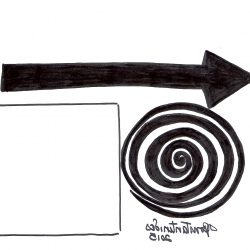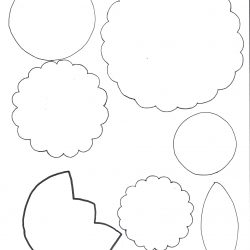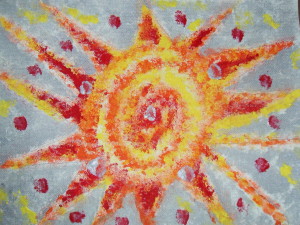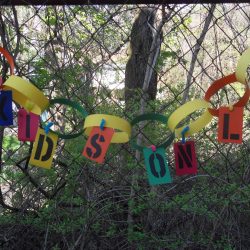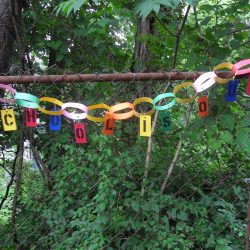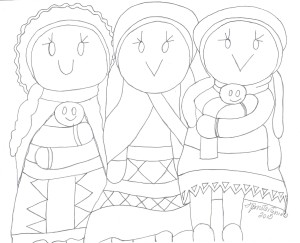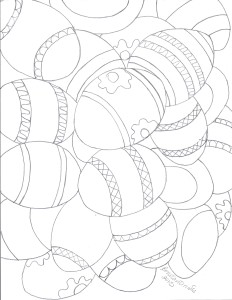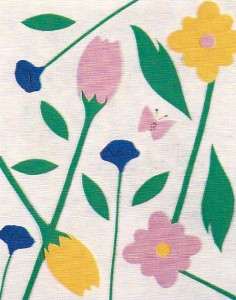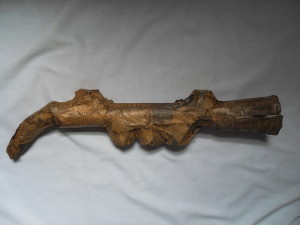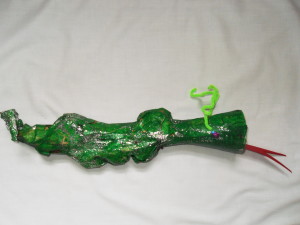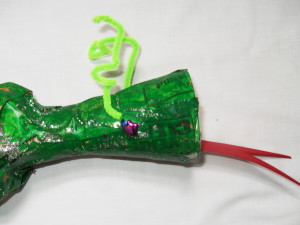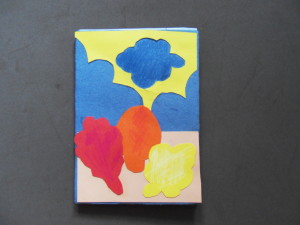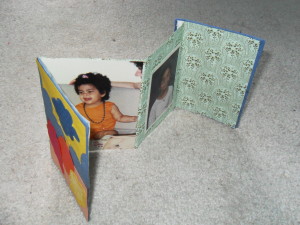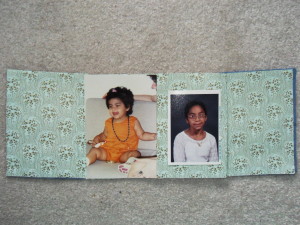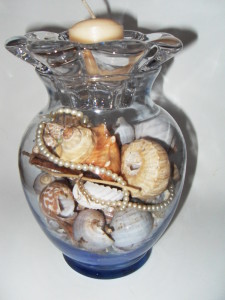HOW TO MAKE MOBILES
What is a mobile? A mobile is a construction whose lightweight parts are suspended by threads attached to fine wires or rods.
Now take the banner designs and use them to make mobiles. See how they change when you go from a flat design to a three-dimensional design.
Follow the tutorial below and try your hand at making mobiles!
MATERIALS
Here are some basic supplies that you will need on hand for all the mobile designs:
Scissors
Wire, sticks, pencils, and the like, for arms
Compass
Thread, light and heavy weight
Poster board
Colored pencils and pens
Glue
Felt
Pencil and ruler
Recyclable materials
Tracing paper
Whole puncher (optional)
ADDITIONAL STUFF YOU SHOULD KNOW
Making a circle and a cone:
Technique #1: use a round object and trace.
Technique #2: Use a pencil compass to allow you to make a large or small circle. To find the diameter, measure circle from one edge through the center to the opposite side.
Technique #3: Cut out a circle. Cut out a section like a slice of a pie, from the edge to the center. Remove the section. Bring one edge over to the other side. Glue the overlapped edge. The larger the section you cut out, the taller and thinner to cone.
Technique #4: How to attach a thread: Thread objects by using a large needle. Push the needle through the shape at the balancing point and pull the thread until a small length is left. Then make a knot at the top of the shape. Cut off excess thread. When attaching the thread to the wire, tie it tightly.
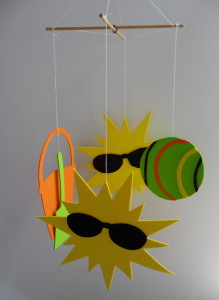
Summer Mobile
Ages: 5 – 12 years
Time: ½ hour – 1 hour
MATERIALS:
White felt square 36”x 36”
Orange Fun Foam
Yellow Fun Foam
White Fun Foam
Beige Fun Foam
Turquoise Fun Foam
Black Fun Foam
Moss
Black marker
1. Using the patterns provided, trace and cut the sun from the yellow Fun Foam, the pail from the orange Fun Foam, the shell from the beige fun Foam, the shovel from the turquoise Fun Foam, and all four colors of Fun Foam for the ball. Finally, cut the sunglasses from the black Fun Foam. You don’t have to use all the patterns from the banners project.
2. Take a small amount of moss and glue it on the top of the pail. Press down firmly while it dries.
3. Use a black marker to draw the sun’s cheeks, smile and nose. If you are using the shell pattern, sketch a few lines on it to make it look three-dimensional. Also, spell out “Summer Is Fun!”
4. Cut two dowel rods. Tie a piece of string, jute or wire around the middle of the two dowel rods to secure them. Then, lace a piece of string, thread, jute, or wire 6” to 8” in length through the hole at the top of each shape. Tie the shapes to the dowel rods.
5. To balance the mobile, place two or more shapes to each dowel rod and be sure that some of the shapes hang lower (or higher) than some of the others. Cut a string long enough to tie on either end of the dowel rods for hanging.
6. Does your sculpture move? What makes it move? How is this design different from the banner design? Can you list the differences? Can you list the similarities? What is the difference between attaching the leaves on the mobile and attaching the leaves on the banner? What makes the leaves on the mobile three-dimensional and the leaves on the banner two-dimensional?
ADDITIONAL INFORMATION FOR MAKING ADVANCED MOBILES
How to make wire arms: Make loops on the ends. This will make it easier to tie on shapes. Use needle-nose pliers and wire with a gauge of 14, 1, 18 or 20. Cut the wire to the desired length and bent until it is slightly curved. This will make the objects look more graceful as they balance from the wire. The curve also makes them look more graceful as they move in the air.
How to make a smooth curve: Grip one end of the wire with one hand and gently pull its length between the thumb and forefinger of the other hand, bending as you pull.
How to make a loop: Grasp the end or the wire with the needle-nose pliers. Hold the wire as you twist to form a circle. If you are tying on the objects, close the circle completely. If you are slipping on a loop into the circle, leave it slightly open. Complete the mobile and close the loops. Hold the wire so that the eyelets or circles are on the under side of the arm when attaching the shapes to the mobile.
Like this:
Like Loading...


